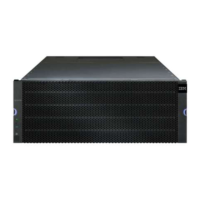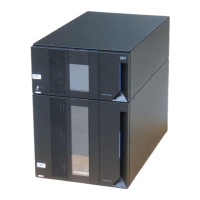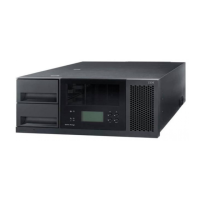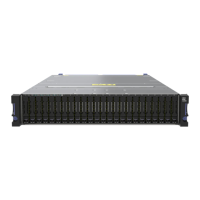Modifying Your Configuration
For most configurations, after you have created your initial configuration by using the autoConfigure
storageSubsystem command or the create logicalDrive command, you must modify the properties of
your configuration to make sure that it performs to meet the requirements for data storage. Use the set
commands to modify a storage subsystem configuration. This section describes how to modify these
properties:
v The controller clocks
v The storage subsystem password
v The storage subsystem host type
v The storage subsystem cache
v The global hot spares
Setting the Controller Clocks
To synchronize the clocks on the controllers with the host, use the set storageSubsystem time command.
Run this command to make sure that event time stamps that are written by the controllers to the Event
Log match the event time stamps that are written to the host log files. The controllers stay available
during synchronization. This example shows the command:
c:\...\...\client>smcli 123.45.67.89 -c “set storageSubsystem time;”
Setting the Storage Subsystem Password
Use the set storageSubsystem command to define a password for a storage subsystem. The command
takes this form:
set storageSubsystem password=”password”
The password parameter defines a password for the storage subsystem. Passwords provide added security
to a storage subsystem to help reduce the possibility of implementing destructive commands.
Attention: Possible data corruption or data loss – Implementing destructive commands can cause
serious damage, including data loss.
Unless you define a password for the storage subsystem, you can run all of the script commands. A
password protects the storage subsystem from any command that the controllers consider destructive. A
destructive command is any command that can change the state of the storage subsystem, such as logical
drive creation; cache modification; or reset, delete, rename, or change commands.
If you have more than one storage subsystem in a storage configuration, each storage subsystem has a
separate password. Passwords can have a maximum length of 30 alphanumeric characters. You must
enclose the password in double quotation marks (“ ”). This example shows how to use the set
storageSubsystem command to define a password:
c:\...\...\client>smcli 123.45.67.89 -c “set storageSubsystem
password=”1a2b3c4d5e”;”
Important: Password cannot be reset without current password– If you forget the storage subsystem
password, you cannot reset the password using Storage Manager. To reset the password in that situation,
you must contact your IBM support representative.
Setting the Storage Subsystem Host Type
Use the set storageSubsystem command to define the default host type. The command takes this form:
set storageSubsystem defaultHostType=(hostTypeName | hostTypeIdentifier)
The defaultHostType parameter defines how the controllers in the storage subsystem will communicate
with the operating system on undefined hosts that are connected to the storage subsystem SAN. This
Chapter 4. Configuring a Storage Subsystem 4-45

